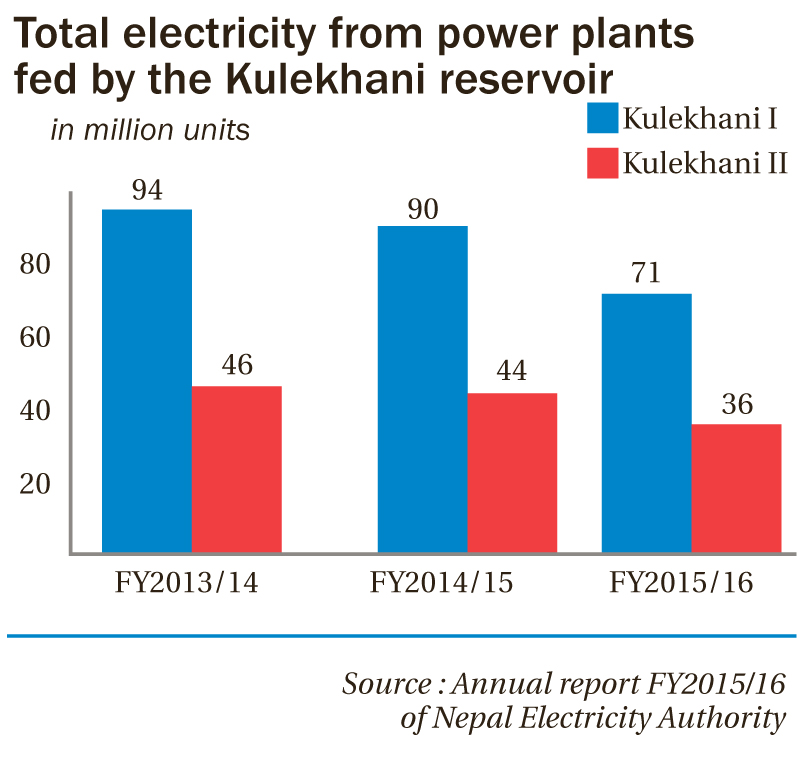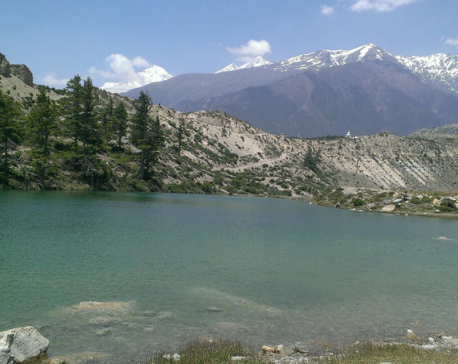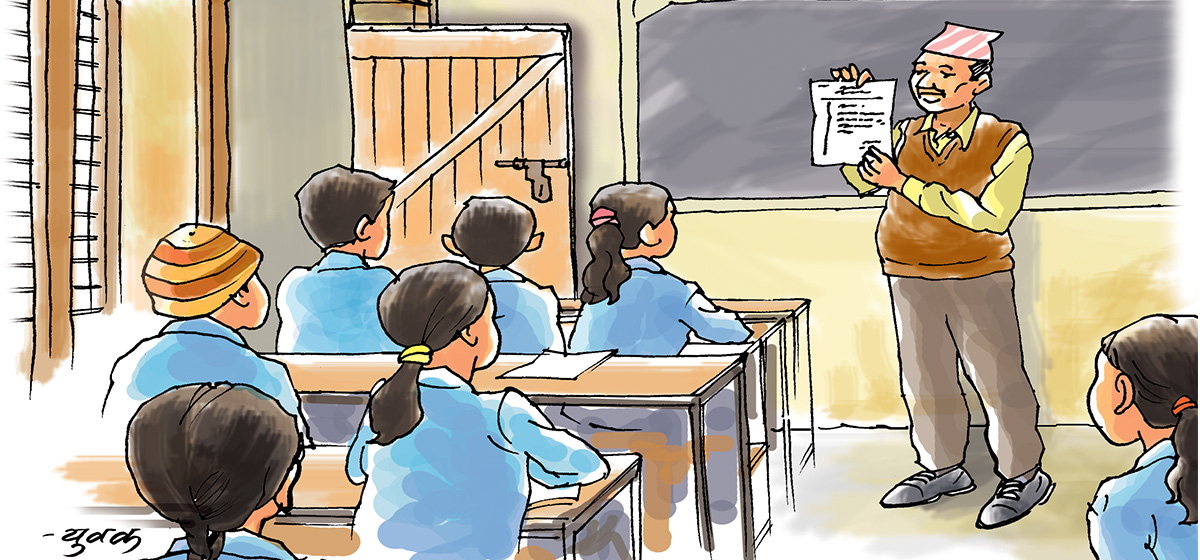
OR
Kulekhani water level likely to be lower than last year
Published On: September 13, 2016 01:20 AM NPT By: Republica | @RepublicaNepal

KATHMANDU, Sept 13: Water level in the Kulekhani reservoir was 1,518.6 meter, out of the total capacity of 1530.12 meters, on Sunday, indicating that power generation won't improve this year too.
According to officials of Kulekhani I Hydropower Project, rainfall in catchment area of the reservoir is low compared to average rainfall in rest of the country. Low water level in the country's only reservoir project will constrain energy supply during dry season when energy demand hits peak.
Kulekhani officials say that they expect the water level to rise to around 1,522 meters by the end of monsoon or by the third week of September.
In the monsoon of 2014, water level in the reservoir had increased to 1,530.12 meters.
Kulekhani I has installed capacity of 60 MW and its downstream project, Kulekhani II, generates 32 MW. However, electricity generation by both the plants has seen a decline over the past two years.
Basant Kumar Phuyal, chief of Kulekhani I Hydropower Project, said water level in the reservoir is still low. Last year, the water level was at 1,525 meters.
Country's overall rainfall till Sunday stands at 1,373 mm which is 91 percent of the average rainfall, according to the Department of Hydrology and Meteorology.
Pratibha Manandhar, a senior meteorologist with the department, said they do not have rain gauge stations in Kulekhani catchment area. “But we are expecting better rainfall in the next two weeks,” she said, adding: “Sometimes monsoon can prolong up to October."
Both the plants are lifeline of country's energy supply system. The plants are not run during rainy season to save energy for dry months.
“However, we have to run the plants everyday even during wet months as the system often collapses during peak hours due to high demand. We also operate the plants during wet months when other plants are shut for scheduled maintenance or power supply from other plants is affected,” added Phuyal.
You May Like This

Kulekhani water level lowest in three years
KATHMANDU, Nov 9: Water level in the Kulekhani Reservoir, which feeds two hydropower plants, has reached only 1522.55 meters this year... Read More...

KUKL imposes water tariff without supplying water!
KATHMANDU, Feb 13: "Hello, General Manager! Is it mandatory for people to pay tariff though they are not supplied drinking water... Read More...

Climate change blamed for depletion of water level in Dumba lake
MUSTANG, June 19: The existence of the mesmerizing Dumba lake located at Jomsom – 9 is in peril. ... Read More...







Just In
- Shrestha nominated as Chairman of NCC's Advisory Council
- Take necessary measures to ensure education for all children
- Nepalgunj ICP handed over to Nepal, to come into operation from May 8
- Nepal to gift two elephants to Qatar during Emir's state visit
- NUP Chair Shrestha: Resham Chaudhary, convicted in Tikapur murder case, ineligible for party membership
- Dr Ram Kantha Makaju Shrestha: A visionary leader transforming healthcare in Nepal
- Let us present practical projects, not 'wish list': PM Dahal
- President Paudel requests Emir of Qatar to help secure release of Bipin Joshi held hostage by Hamas



_20240423174443.jpg)







Leave A Comment